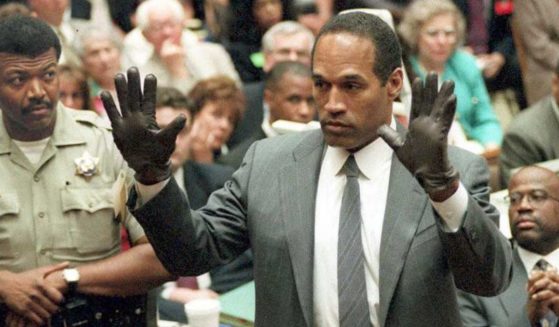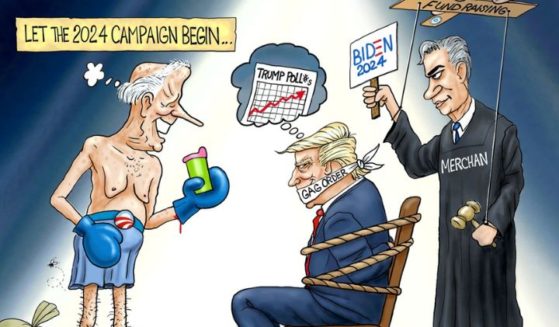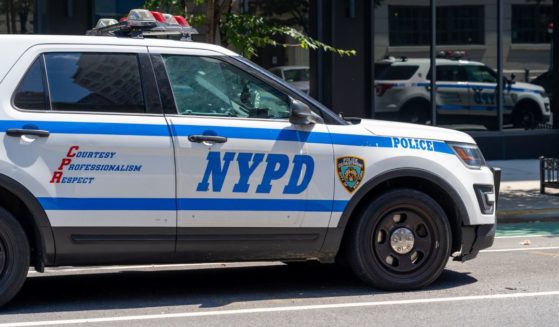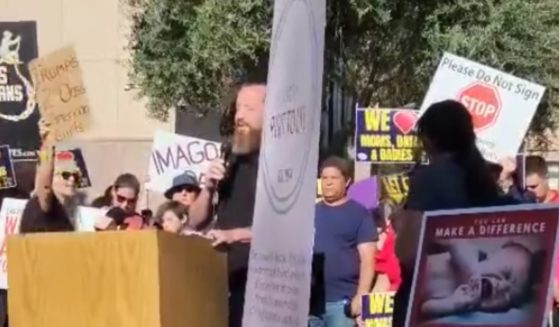Trump Raises Bible, Shushes Reporters in Front of Historic Church Attacked by Rioters
On Monday, the day after Washington’s historic St. John’s Episcopal Church was partially burned, President Trump visited the site. He raised the Bible.
However, in the media coverage, there was little focus on the symbolism or the hope. Instead, there was anger that protesters had to be dispersed so the president could visit the church.
Such is June 2020, this nadir of a year that has not yet found its lowest point.
The visit happened after a Rose Garden speech about the protests over the death of George Floyd in Minneapolis. The president said that his “administration is fully committed that for George and his family, justice will be served.” That didn’t get much attention.
He said that, in response to widespread violence, he was taking “immediate presidential action to stop the violence and restore security and safety in America” and that this would involve “all available federal resources, civilian and military to stop the rioting and looting, to end the destruction and arson, and to protect the rights of law-abiding Americans, including your Second Amendment rights.” This got plenty of attention, almost uniformly negative.
The president then walked to St. John’s, which is just north of the White House. The timing is critical. In Washington, a 7 p.m. curfew has been issued. The curfew was widely ignored, as CBS News reported, but it’s worth noting that Trump’s trip to St. John’s happened shortly after this curfew came into place. His route to the church should have been clear.
According to the Washington Examiner, police used tear gas to disperse protesters so the president could walk to St. John’s, where he was photographed holding a Bible.
I almost can’t believe what I’m seeing. POTUS just walked out the front door of the White House and into Lafayette Square – the epicenter of the DC protests – to visit historic St. John’s Church, which was set on fire last night. pic.twitter.com/XueoF2RC6z
— Kristin Fisher (@KristinFisher) June 1, 2020
The scene was a Rorschach test for your reaction to the protests in a myriad of ways.
— The White House (@WhiteHouse) June 2, 2020
More than anything else, the attack on St. John’s was symbolism of the most ominous sort.
This wasn’t just any religious institution. Built in 1816, it’s the church where every president since James Madison has visited. The attack on St. John’s didn’t damage the sanctuary of the church. However, the basement, which is used for childcare, was set ablaze, and the edifice itself was vandalized. The parish house, which contains offices and is used for gatherings, was also targeted.
According to Fox News, Rev. Rob Fisher said the physical damage could have been “a lot worse.” The psychic damage, one imagines, will take longer to assess.
After the Rose Garden speech, Trump made the short walk from the White House to St. John’s.
“We have a great country,” Trump told reporters, holding the Bible. “We will make it even greater. It won’t take long.”
At one point, as Trump posed in front of the church with members of his cabinet, as well as White House press secretary Kayleigh McEnany, he shushed a reporter (about the 2:20 mark in the video above).
It was an appropriate demand for a moment of silence to commemorate the scene, a moment for viewers to appreciate the symbolism of a United States president standing in defense of a church that had been deliberately attacked.
Like so many things with the president, you saw what you wanted to see. Jennifer Rubin — whose role at The Washington Post, for the unacquainted, is positioned as the reformed conservative in residence who bridles with anger at anything Trump-adjacent — was an early front-runner for the most overheated response to this from an individual Who Is to Be Taken Seriously.
“Nothing could be more representative of the dangerous narcissism of a president in over his head, resorting to threats of violence against a country he ostensibly is supposed to lead. The deliberate instigation of violence for his own photo op tells Americans how deeply twisted and deformed his character is,” Rubin wrote Monday evening in a twin-denunciation of Trump’s visit to St. John’s and the Rose Garden speech in which he promised to get violent unrest under control.
“His stunt was designed to play to the most rabid white evangelicals, who inexplicably have always seen themselves — not African Americans — as the true victims. The invocation of a religious institution to justify an assault on peaceful protesters was as great an abuse of religious symbols as anything Trump has done. Surely, he never heard of the ‘Blessed are the peacemakers’ passage from the Christian bible [sic]. He worships not peacemakers but instruments of brute force.”
Let’s leave aside the strangeness of appealing to “the most rabid white evangelicals” by visiting an Episcopal church, of all places, in the wake of an attack on it. Rubin’s argument, when collapsed to its most basic level, is that the righteousness falls on the side of those who desecrated the church, not those who tried to show that such attacks cannot shake the foundation of our country or the faith of its people.
The idea that this is a stunt — that a display of religiosity in the face of an attack on a symbol of our nation’s religious life is somehow uncalled for because protesters wouldn’t make way is a decidedly warped view of where we are.
Meanwhile, picking out one of the Beatitudes while ignoring the entirety of the Bible does that argument no favor, particularly when the crux of Rubin’s argument is that Trump’s efforts to keep peace in the face of overwhelming violence protesting the death of a man at the hands of a police officer who’s been charged in the case means that “Trump wants to go to war against America.” (That’s part of the headline, natch.)
But that’s not what he’s doing. He’s not backing down, nor should he. This is a moment where strength is urgently needed, particularly given the profound, singular miasma that exists outside of these riots.
Dealing with them via a laissez-faire attitude, as if the brighter the conflagration gets the deeper the flames of understanding will take hold, is such a misguided impulse as to be beyond words.
The symbolism of this was clear, and it wasn’t just dog-whistling to “rabid white evangelicals.” Instead of taking a motorcade, the president walked to the church. With one act, he told the rioters St. John’s was still there, our faith is still intact and so is America.
To deny the power inherent in what the president did is to deny the forces arrayed against us at this urgent moment in our history.
Truth and Accuracy
We are committed to truth and accuracy in all of our journalism. Read our editorial standards.












